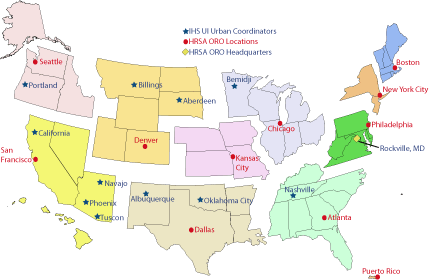American Indian/Alaska Native Health
Tribal Consultation Meeting, Wednesday March 6, 8:30 am to noon ET, Washington, DC
Tribal leaders unable to attend may join by phone: 888-989-4497, passcode 4857629
Health Resources and Services Administration (HRSA) improves access to health care services for all people in the U.S. who are uninsured, isolated, or medically vulnerable and supports health care providers in every state and U.S. territory.
HRSA is working with partner Federal agencies and Tribal communities in order to increase access to health professionals, health centers, and affordable health care in hopes of decreasing Tribal health disparities.
Health Resources and Services Administration provides opportunities for collaboration with Indian Health Service (IHS) facilities and Tribal organizations to improve access to care for American Indians and Alaska Natives. The two agencies are natural partners in providing comprehensive, culturally acceptable, accessible, affordable health care to improve the lives of Tribal populations.
Opportunities for Collaboration
To help Tribal organizations maximize the impact of key HRSA programs, the two agencies have identified the following priorities:
- Greater Urban Indian Health participation in the Health Center Program
- Better application of the Health Professional Shortage Area (HPSA) designation to Tribal populations
- Workforce support through health professions programs and the National Health Service Corps
- Broader participation in the HRSA competitive grants process
- Technical assistance from HRSA regional offices
HRSA and IHS Locations

- Bureau of Indian Affairs programs in the 1960s encouraged Indian families to relocate from reservations to various cities across the country.
- Relocation offered job training and placement, and was viewed as a way to escape poverty on the reservation.
- Most American Indians/Alaska Natives today live in cities.
- Approximately 149,000 urban American Indians/Alaska Natives receive care through the Urban Indian Health Program; another 427,100 live close enough to an Indian Health Service or Tribal facility to receive care there.
Tribal Consultation Policy (PDF - 358KB)
Update on Tribal Consultation Policy (PDF - 233 KB, 02/17/2012)
Update on Partnership with Urban Indian Health Organizations (PDF - 23 KB, 04/28/2010)
Update on HRSA-IHS Collaborative Efforts (PDF - 35 KB, 12/16/2009)

